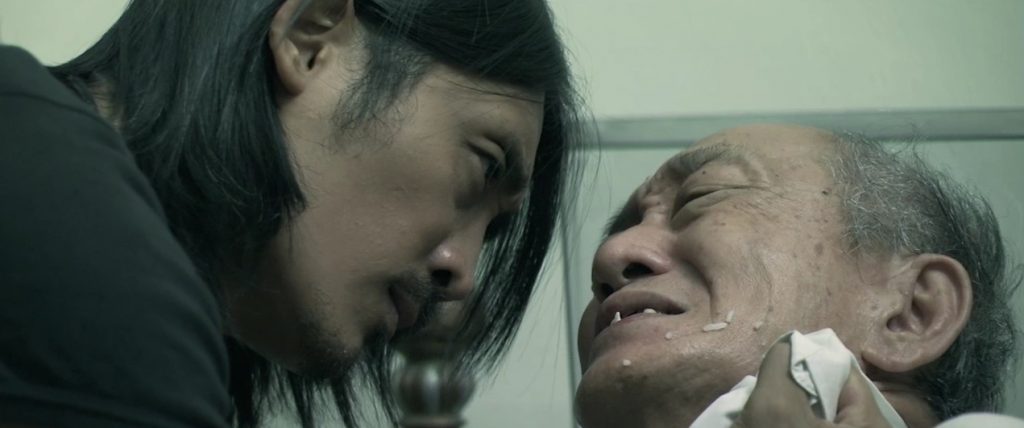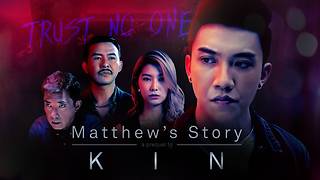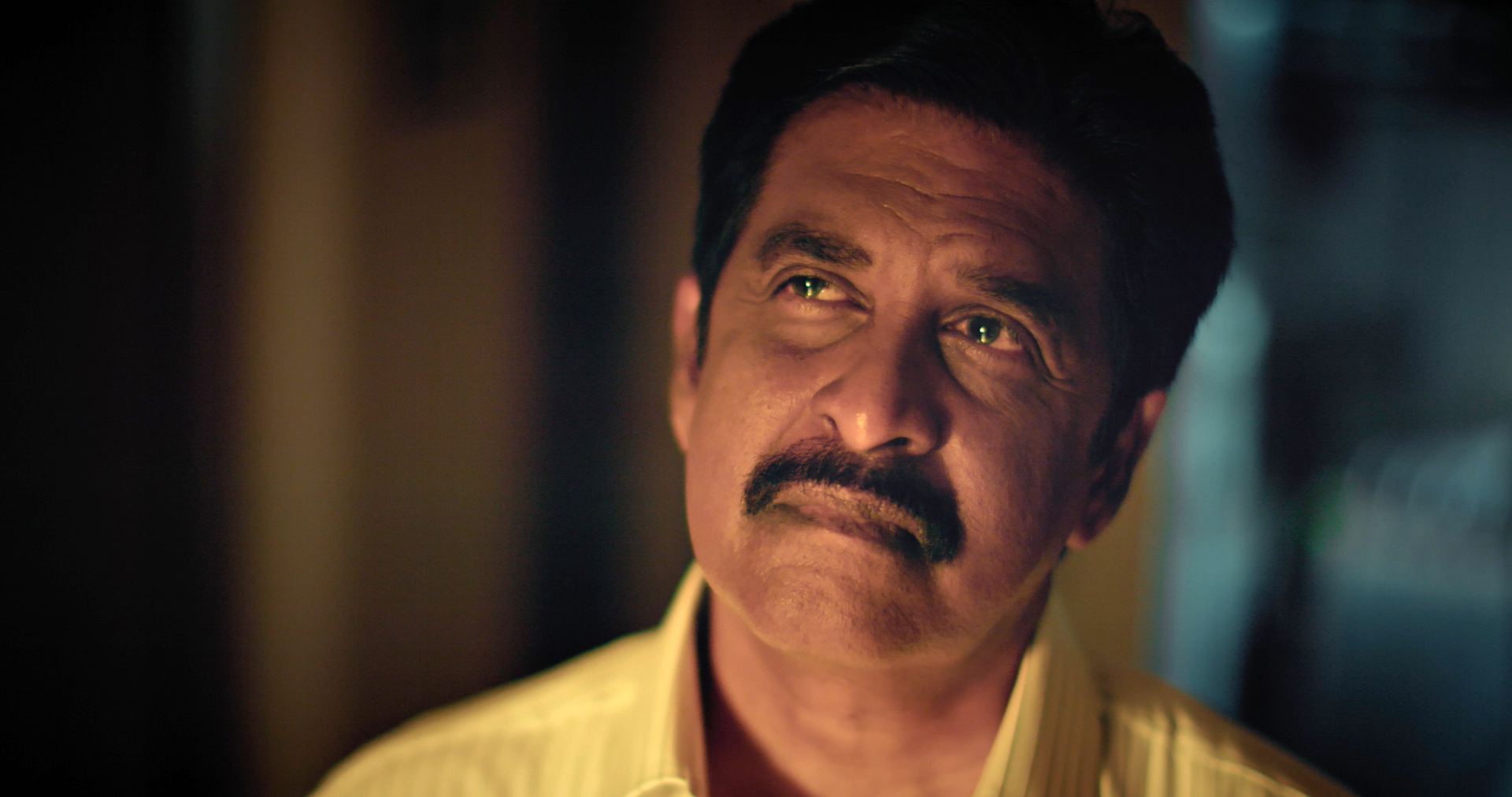At the moment, though, Kenny is feeling a little small.
“The big boys like HBO, Netflix, Amazon; all there. For a little guy like us to be presented there, and walk the red carpet, all that … It was amazing.”
Drive is a slow-burning, contemplative series on the solitude and humanity of a late-night taxi driver, played by Silvarajoo Prakasam.
But Singapore is famous for one thing, and it ain’t taxis.
“In [Series Mania], some of them only knew Singapore through Crazy Rich Asians. In CRA, you take a taxi, you go to Marina Bay … With our series, Drive, you go the other way… A lonely taxi driver.”
Fast forward to May 2019, and I’m seated comfortably in Kenny’s office at Viddsee Studios, a Singapore-based film studio that has filmmakers across the region. One year later, how has international perception of Singaporean film changed?
Through Kenny’s native platform, Viddsee, he says that much data is collected on local films’ viewership; particularly, how foreign audiences from around Southeast Asia are engaging with Singaporean films. While subtitles are provided, many of the subtleties and nuances of the language may be lost to international audiences.
“You’d be surprised, though,” says Kenny, “At how many of these films can break the language barrier, because of the universal values in these stories … Love, sacrifice, empathy, triumph over evil, the underdog.”

“Our idiosyncrasies, our folklore, our culture; they intrigue [international] audiences,” says Kenny.
“As a filmmaker, I can put on a hyperlocal lens, but because of universal values, the [story] can go global … That’s something we should be proud of, and try to show more of, to the world.”
“[It is] one of Royston Tan’s earlier films,” Kenny says, “It’s called Hock Hiap Leong. I went back to look for it recently, found a bootleg copy—and I’m still in love with it.”
Royston’s film is about a man who reflects upon his childhood haunt: the titular coffee shop, once located in Armenia Street, that is soon to close down. Midway through, the narration fades away. Inexplicably, the characters then erupt into a cheesy ‘70s song-and-dance routine, capturing the shop’s ethos in a form that transcends mere words.

Professional short films, such as those produced by Kenny, occupy a strange middle ground. While not as costly nor as profitable as big-budget productions like TV series or feature films, they require larger budgets than the other type of short-form content available on the internet: user-generated videos (think Youtube or Vine). With so many players fighting for attention, there are doubts about the viability of short films in Singapore’s tiny movie market.
“Youtube is not a competitor,” Kenny corrects me, “In fact, we are certified partners. [On Youtube], you fall into certain categories, things like how-tos, personalities… [Short film] content, however, is being experienced through a narrative arc, through characters … there is escapism.”
Kenny reckons that short films are a unique offering in the cinematic landscape. While mainstream films and big-budget television productions are tied down to corporate interests, and will err on the side of caution to safeguard their profits. Themes, style and content tend to follow established norms.
Short films, as a less resource-intensive form, are more free to take a leap of faith into uncharted territory.
“We found that revenge films really work well with certain female audiences. There’s a group of people that are really passionate [about that], so when you can push these films to them, especially from a female perspective, we can get a lot of views. And when these people are being served the content … they know they are being targeted, and it’s something they like, so they will stay on more. It takes time to build up this consumption habit.”
Kenny goes on to explain how much care they take to understand their audience. Viddsee employs a team of analysts to crunch the numbers and provide insights based on such data; they help to unedersand the psychology and demands of local audiences.
“In the Philippines, or Indonesia,” says Kenny, “The underdog story is more important than anything … So if you have a character that rises from being an underdog, they will love it; if you have a character that’s a rich man; it may not work as well. Things like that guide the decisions of our characters—but really just as a guide,” he quickly adds.
So where is the art in ‘creative decisions’ based on giving people what they want?
To be fair, they aren’t simply doing that. Sometimes, Kenny contends, creators can go in the opposite direction of what viewers expect. Supported by analysts’ insights, they can be clearer on the reasons for making a trailblazing creative decision.
Only when they know data can creators react to it, choose to respond, or ignore it. Kenny prefers this informed choice to “taking steps in the dark”.
“I always use the Maps analogy,” he says, “Google map tells me how to get somewhere in three minutes. But actually, if I physically go out, I see something different. Maybe I can jump over this fence, cross there … Data shouldn’t make the decision for us, it should only be a guide.”

But big-budget feature-length films are hard to fund, and even harder to market en masse. Into this empty space steps Viddsee, with a simple solution—local content, but on your phone, and, you know, actually good.
Make no mistake, this is not a sponsored article. Drive is flipping fantastic.
However, I can’t help but clench my gut at the sound of words like ‘pushing content’, ‘consumption habits’, and ‘data insights’. It sounds too much like the infamous algorithms of sites like Facebook or Youtube, driving endless cycles of self-selecting content for pure profit. But I’m just a cynic; Kenny Tan, an industry veteran (relatively speaking—he’s only thirty-six) has seen too many passionate filmmakers quit the field for lack of work.
“Last year,” says Kenny, explaining why he enjoys the job of studio head, “I went down on set to meet people … The slightly elder [filmmakers] were bringing on the younger ones, teaching them … I was really touched. There was this other group, an all-female team. I thought: that’s great! Sends out a very good message; who says only men can be DPs?!” (A DP is a director of photography for a film)
“Now, in this position, head of studios … I have lesser chances to direct. But the value I could create, to some of these young filmmakers, I could feel it,” says Kenny. These opportunities are enabled by the data-driven investment and commercial partnerships that Viddsee attracts.
So this tale is about more than just the Singaporean culture war, or short films, or the viability of film itself. Commercialization, big data, algorithms—I hate them all. But after speaking to Kenny, it is hard to ignore the real, tangible opportunities they create, both for the art form and the creators that I love, that allow me to keep enjoying their work. In the modern world, it is often the things you disdain that make the things you enjoy possible.
At the end of the day, consumers will have to decide for themselves whether the data-driven economy is ultimately what they want. Is it art, or is it crass commercialism?
As with most things in life, it’s more complicated than that.
Whatever it is, however, we can all agree on one thing—at least it’s not, well, this:







